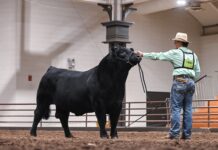SALEM, Ohio – U.S. pork producers voted to end the mandatory promotion and research assessment by a 1,500-vote margin.
U.S. Secretary of Agriculture Dan Glickman announced the checkoff referendum results Jan. 11. The final tally showed 15,951 votes against continuing the checkoff; 14,396 votes in support of the checkoff. The voting was held Aug. 18 through Sept. 21.
“A program that imposes mandatory assessments on pork producers and importers must have the demonstrable support of its participants,” Glickman said. “The pork checkoff program does not have that support.”
The referendum process has been a bumpy one and the National Pork Producers Council claims USDA did not have authority to hold the vote because it did not validate sufficient signatures on referendum petitions. The council filed an injunction to overturn the decision, calling the USDA’s decision “politically motivated.”
“Instead of a sincere attempt to capture the will of the majority of legitimate pork producers about their checkoff, USDA let political motivation decide the fate of one of the most successful commodity programs in American agriculture,” said Craig Jarolimek, NPPC president.
Approximately $54 million was collected through the pork checkoff in 2000, based on the assessment of .45 of 1 percent, or 45 cents for every $100, of a pig’s value when it is sold.
The advertising campaign that developed “The Other White Meat” identification was funded through checkoff money.
Twenty percent is returned to state pork association for state-directed promotion, education and research programs. Last year, for example, the Ohio Pork Producers Council received approximately $300,000 for state programs.
“We are surprised it didn’t pass in Ohio,” said Dick Isler, executive vice president of the Ohio Pork Producers Council. Ohio pork producers defeated the checkoff by a 1,009-1,026 vote.
Although questions concerning the voting process remain, the OPPC board held a conference call Friday to discuss options, including a state pork checkoff or a membership-based funding mechanism.
“If we don’t do something, there will be no one to speak for the independent pork producer,” Isler said.
He said organized opposition efforts were assisted by animal rights interests. “It (the vote) is a blow to the pork industry and that’s a win for them.”
Isler said the checkoff was doing what it was supposed to do – increase pork demand – but overproduction and the rock bottom hog prices of the last quarter of 1998 devastated the independent sector of the industry.
“That’s what a lot of people are associating the vote with – the last quarter of 1998,” Isler said.
U.S. cattle producers are closely watching the pork referendum reaction because the mandatory beef checkoff could also be up for a vote this year.
A national petition drive spearheaded by the Livestock Marketing Association produced more than 126,000 signatures of producers who want a vote on the checkoff’s future. The petitions were delivered to USDA in November 1999.
The law requires that 10 percent of legitimate beef producers, or 107,000 producers, request a referendum. After a lengthy delay, USDA is now using a signature validation process similar to the one used in the failed validation of the pork checkoff referendum petitions last year.
An announcement is expected by the end of January.









